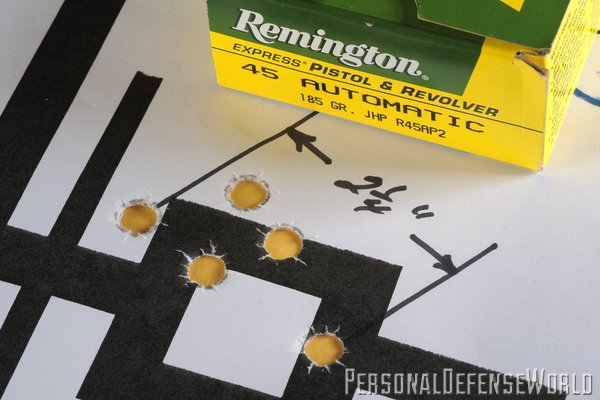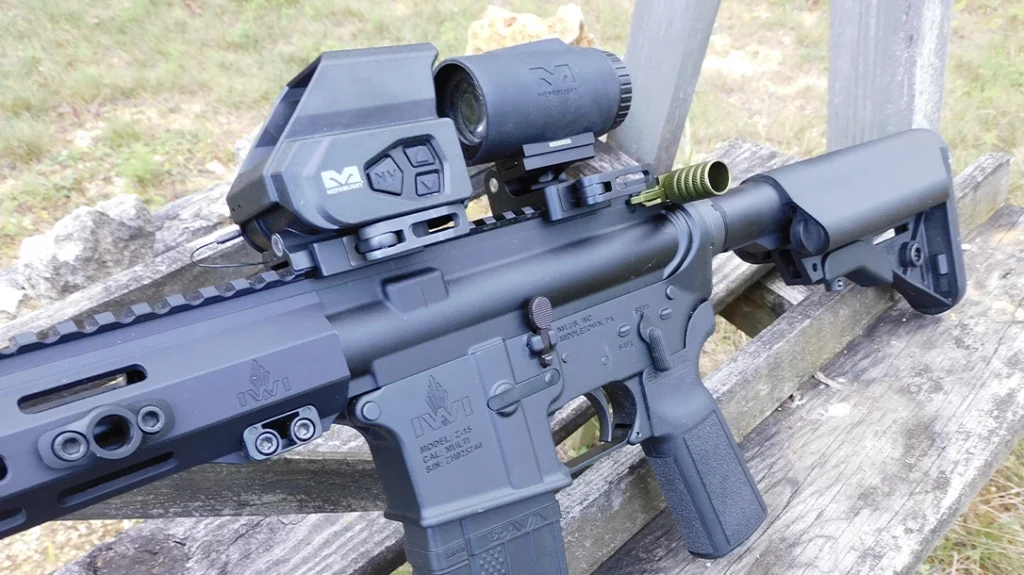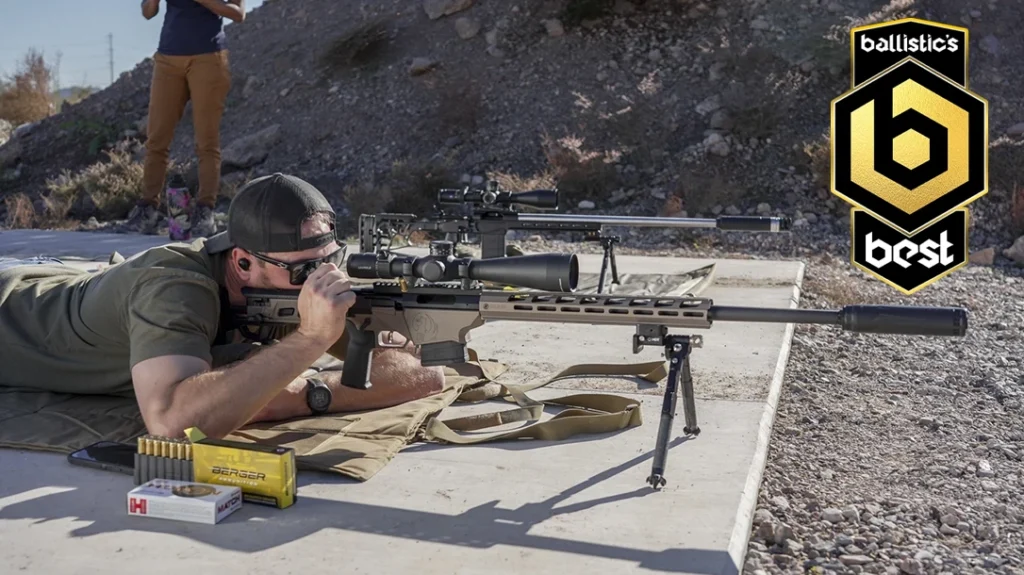While looking through Sig Sauer’s catalog, there was no doubt in my mind that it’s in the handgun business to stay: There was a multitude of good, reliable rimfire and centerfire guns with dozens of models and variations in shapes and sizes to fit just about anyone.
It wasn’t very long ago when the German police were looking for a new handgun in the standard European caliber, 9mm Parabellum, to outfit the troops. If memory serves, the trials included the Heckler & Koch P7, the Walther P5 and the Sig Sauer P225, a compact version of the P220 that went on to be the German police’s “Pistole 6,” which came complete with a magazine release at the bottom of the grip. Newbies to the shooting sports will not remember the HK P7 and Walther P5 or give them much thought, but the Pistole 6 went on to be the present day P220, a gun that is (and has been for roughly 35 years) readily available to shooters, with little change to its overall design or handling characteristics. “Stable” perfectly describes the P220 series of semi-automatics.
When the first P220s were introduced, they were available in 9mm Parabellum and the 7.65mm, with a few .38 Super models drifting in. Hawes and Interarms imported the guns to the U.S., and even Browning got on the bandwagon, naming it the “BDA.” Since America seemed lukewarm about the three initial offerings, guns in .45 ACP soon hit the shores, experiencing an almost immediate success. With this pressing need for support and service, Sig Sauer set up offices in Herndon, Virginia before moving to its present location in Exeter, New Hampshire in the mid-1980s.
Advertisement — Continue Reading Below
Gun Details
If the current crop of polymer guns or synthetic frames doesn’t appeal to you, the P220 will. While many are content with the utilitarian look of Glocks and Springfield, there are those (author included) who like a little pizzazz, be it polished stainless steel slides, fancy grips or custom addi- tions, and to me the P220 Elite fills the bill with aplomb. The Elite (as well as the Carry and Compact models) also comes in Nitron black, and the standard P220 comes in Nitron black, two- tone or reverse two-tone. All P220s are available with numerous trigger options, larger magazines and even a .22 rimfire adapter for those who like to shoot a lot but are on a limited budget. After years of upgrades and refinements, the P220 series is now available in the .45 ACP only.
For those who may like a slightly larger or heavier gun, the P220 is, again, for you. Checking in around 39 ounces empty, it is a big gun, and its .45 ACP chambering comes in handy, especially when shooting full-house loads. Unlike other guns that may have a synthetic frame or related parts, the P220 Elite is machined from 100 percent stainless steel, giving it the heft you need for close-combat shooting while keeping recoil at bay.
Advertisement — Continue Reading Below
I evaluated the P220 Elite Stainless, an attractive gun. With a matte stainless finish on the slide and frame, the gun is nicely contrasted by blued parts (hammer, trigger, operating levers). The grip panels are laminated rosewood, making for a perfect color combination with the finishes. It always amazes me how perfectly these handguns are manufactured with new CNC-machining practices, and the P220 is no exception. All the flats are flat, the sharp corners keep their edges, and there are no cutting or polishing marks to detract from the gun’s appearance. According to the information on the slide, the frame is machined in Germany while the rest of the gun made right here in the U.S.
The slide is machined from a stainless billet and has cocking serrations both fore and aft. The top of the slide is finished like the rest of the gun, and checking in the bright sunlight offered little discomfort over a blue or black gun when it came to sights. For outdoor shooting, SIGLITE night sights offer a wide notch on the rear assembly, which allows you to center the front sight with ease, even in rapid- fire situations. The sights include twin tritium dots on the rear and one on the front, offering the customary three-across sighting picture. They are very well made, somewhat “melted” into the slide and offer no rough edges to snag on clothing or leather gear. According to many, this
The typical operator controls are all there—the takedown lever, decocking lever and slide release.
The slide has been stylized in that it has a section near the top front that has been dished inward to break up the bulk of this piece. Opening the slide and looking inside the ejection port reveals a massive extractor on one side, followed by a very sturdy ejector on the other side. Because they’re dealing with the power and recoil of the .45 ACP, neither is under built. Lockup between the slide and the frame is first-class: There is a little play, but then again, if it were really tight you would have trouble with functioning. The P220 Elite is right where it should be, with just enough of a tolerance between the slide and frame to ensure perfect functioning time after time and year after year.
Advertisement — Continue Reading Below
Frame Details
Like the slide, the frame is also machined from stainless steel, but when you pick up the P220 Elite, it’s hard not to notice the wide girth in the grips. For most shooters it may be okay (there are always exceptions), but shooters with smaller hands may find them a bit large. In the end, it will be your personal preference that will sort all of this out, so my advice here is, if you think it’s going to be a problem, go to a commercial shooting range to try the gun out before purchasing it. The grips are polished, laminated rosewood that has been stippled (a fine German tradition) to ensure a secure grip when firing the weapon. The front of the frame has been checkered in concert with the stippling, allowing additional purchase on the gun when shooting. Both halves mate perfectly, and the slight bulge at the base of the grip has somewhat of a Model 1911 feel—albeit with the arched mainspring housing.
The triggerguard is squared up to allow for thicker hand gear such as gloves and has a moderate amount of checkering so the gun can be fired with the Weaver two-hand stance. When it comes to the trigger and the mechanism within, Sig Sauer offers an innovation to what we call a “safety lever.” For example, the gun is both single- and double-action and from a rest will fire the first shot double- action and subsequent shots single- action. While I know some shooters would not give a gun of this type a second look, others like the system as you do have some control concerning that initial shot. A harder pull on the trig- ger might—and I say might—instill some of a thought pattern on whether to continue shooting that misguided individual who just broke into your house. If you are a hard-nose, you can still cock the gun to fire every shot single-action, in which you are looking at a trigger pull of around 5 pounds with a moderate amount of slack before the sear releases—double that for double-action shooting.
Advertisement — Continue Reading Below
In conjunction with all this, the P220 has a decocking lever, which allows you to decock the weapon safety without touching the hammer. Within the gun there is a Sig Sauer patented firing-pin safety lock, trigger-bar disconnector and safety intercept notch. Topping all this out, there is a little goodie, the SRT (short reset trigger), which in a few words pushes the firing-pin block out of the way with the action of the slide cycling. Since only the sear and trigger bar need to be reset, this in turn allows a much consistent trigger pull, shot to shot.
The frame includes a Picatinny rail for optical or lighting accessories, and at the rear of the grip frame is a large beavertail that spreads the effects of apparent recoil over a larger surface. Standard operator controls are on tap on the left side, including the magazine and slide release and the decocking lever. The takedown lever is above the trigger, and to me there is no easier gun to strip down for maintenance than a Sig Sauer: Pull the slide to the rear and push up the slide stop to engage it; drop the lever 90 degrees so it is straight up and down; move the slide forward and off the frame, carefully as there is tension captured by the recoil spring; once the slide is off, push the recoil spring forward and off the barrel; and pull the barrel to the rear and out of the slide. Last but not least, the gun comes in a plastic hard case complete with an extra eight- round magazine and lock.
Range Time
Advertisement — Continue Reading Below
Testing the gun proved the highlight of the day. As I mentioned earlier, this is somewhat of a hefty gun, and shooting the .45 ACP makes the weight more welcome. When the magazine is filled, the balance of the gun is directly in the hand, which helps with target acquisition downrange. I first gathered up roughly 60 handloads that were put aside for tests like this, which included various powder charges and bullet weights. At home I dump them into a box, so I just picked a few magazines at random at the range and fired away. Metal case, hollow points, soft points were all mixed in, and even with all that inconsistency within the confines of the magazine, the P220 never balked, malfunctioned or failed to eject spent cases.
Accuracy was on par with most present-day semi-automatics using com- mercial ammunition, but the smallest group went to Remington’s 185-grain JHP, with five shots going into a nice small cluster measuring 2.25 inches and an average group measuring not much more. The Remington 230-grain metal case hit just under 3 inches, and the Winchester brand just a tad over 3 inches. If you held my feet to the fire and told me I was doomed unless I could come up with one criticism of the P220, it would have to do with trying to feed eight rounds into the factory magazines. The last round is a thumb breaker, but surprisingly, even with one up the spout, the P220 moved right along with no failures of any kind.
The Sig Sauer P220 is certainly a modern-age gun finished to perfection and capable of good groups sans malfunctions. This can be hard to achieve in a handgun, but Sig does it all with room to spare—I like it. For more information, visit sigsauer.com or call 866-619-1128.
Advertisement — Continue Reading Below























